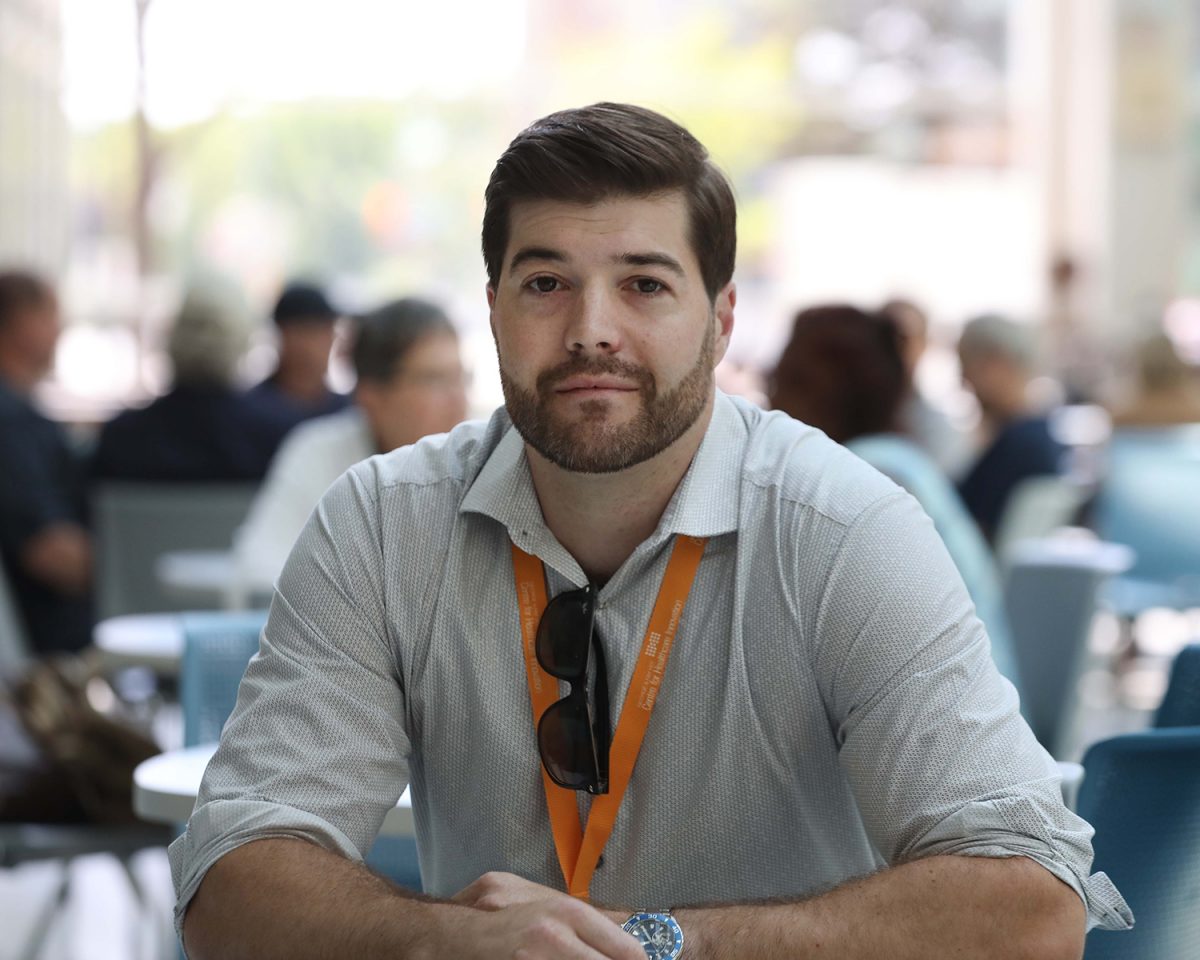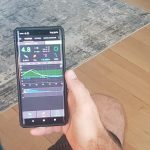
UM researcher Dylan MacKay is involved in a new user guide for people living with Type 1 Diabetes and it's getting national exposure. Photo: Ruth Bonneville, Winnipeg Free Press.
Do-it-yourself insulin management tech gets national acceptance
DIY systems are a type of automated insulin delivery
We have all heard about the need for “work-life balance”, the same can be said for those with Type 1 Diabetes. The need for “diabetes-life balance” has been difficult for many people with diabetes, but as research and technology evolves, so do the ways to manage the chronic disease.
Type 1 Diabetes (T1D) is an autoimmune condition in which the body becomes confused, destroying its insulin-producing cells. Research suggests that people living with T1D make about 180 health-related decisions every day. This makes managing the disease challenging to control and impacts a patient’s daily life.
It’s something Dylan MacKay, University of Manitoba assistant professor of nutrition and chronic diseases lives every day and has dedicated research to understanding. He wants to improve the care for people with diabetes. One of the areas MacKay has been focused on is using his phones to help manage his glucose levels and insulin dosing.
The system is called a “Do-it-yourself automated insulin delivery” (DIY AID) and the way it works is by creating an app on your phone that you build yourself. Yes, you build your own app on either Android and iPhone. But this has been met with some resistance and uncertainty amongst medical practitioners and health care providers. MacKay says “there are lots of websites and forums, and pages on Facebook showing you step by step how to do this. It’s not as hard as you’d think and you don’t have to be super tech savvy to get it to work”.

To date, MacKay believes there are an estimated 9,000 people using this DIY AID system around the world.
The app connects a person continuous glucose monitoring (CGM) device to their insulin pump, the app uses the glucose levels from the CGM and then tells the pump when and how to adjust the amount of insulin it is delivering without requiring direct input from the person with diabetes. So the app can make adjustments overnight while the person is sleeping, leading to better blood sugars overnight and at wake-up.
MacKay himself lives with T1D and says before he installed the app he would often be up throughout the night testing his glucose levels and adjusting his insulin. MacKay first started hearing about these DIY AID apps when they were first created in 2014. He finally decided to build himself the app in 2019. He was cautiously optimistic when he embarked on this new technology, but he didn’t expect the life- changing impacts, specifically when it came to his sleep patterns. MacKay said he now almost always gets a full nights sleep which has improved his quality of life. When it came to doing his job and home life he noted, “I have more of my brain free to do other things that normally would have been occupied by diabetes. So you know, more time for my family.”
To date, there are an estimated 9,000 people using this DIY AID system around the world despite the fact the practice wasn’t always supported amongst health care providers and medical practitioners. Diabetes Canada has recently researched the benefits of this technology, and released a position statement on DIY AIDs, which MacKay reviewed as part of Diabetes Canada’s Clinical Practice Guideline steering committee. The statement highlighted DIY-AID as something clinicians should support people in, as part of a person centered care plan.
It is also highlighted within the Health-Care Practitioner (HCP) user guide, which MacKay helped co-author and reviewed Diabetes Canada’s most recent papers on the issue. Some of the topics for practitioners would include discussing therapeutic options to supporting people living with diabetes during follow-up care, helping them improve their glycemic metrics and quality of life.
MacKay is excited about what the future holds for further technological developments when it comes to managing T1D and encourages people to look at all the options available to them to make their healthcare journey work best for them.
Health practitioners tend to turn to Diabetes Canada to guide patient care and get up-to-date information on research. It recently posted its position in this video about DIY AIDs.
Research at the University of Manitoba is partially supported by funding from the Government of Canada Research Support Fund.






